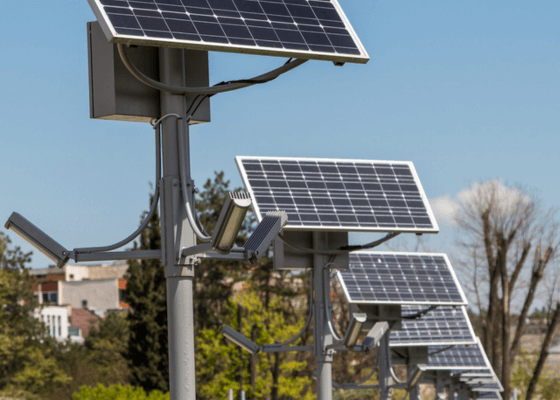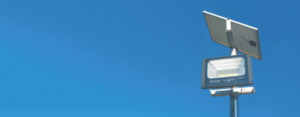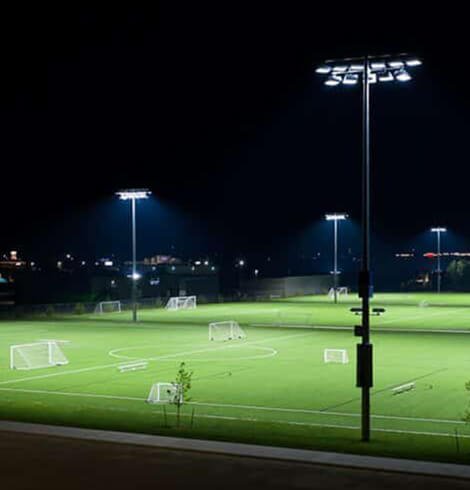Solar lights are a great way to save energy and brighten your outdoor space, but what happens when the sun is nowhere to be found? Charging your solar lights without sunlight is possible, but it may require some creativity.
While direct sunlight is the most efficient power source for solar lights, there are several alternative methods to keep them powered up, including
- indirect sunlight
- USB charging
- hybrid solar lights
- artificial lighting

Whether you live in an area with unpredictable weather or during cloudy days, you may wonder how to charge your solar lights without direct sunlight. Don’t worry—I’ve got you covered.
This guide explores how each of these methods works so you can keep your solar lights glowing even when the sun isn’t shining.
Table of Contents
ToggleHow Solar Lights Work?
Before diving into how to charge solar lights without the sun, let’s quickly review how solar lights function.
Solar panels are made up of photovoltaic cells that absorb sunlight and convert it into DC (direct current) electricity. This electricity is stored in a battery, which is connected to a circuit that powers the light. The more sunlight the panel receives during the day, the more energy is stored, and the longer the light can shine at night.

You can also read this article for more details of how solar light works: How Do Solar Street Lights Work?
However, when sunlight is lacking, it becomes more challenging to get a full charge, which is why alternative charging methods come into play.
Can Indirect Sunlight Still Charge Your Solar Lights?
Yes, indirect sunlight can charge solar lights, but it’s less effective than direct sunlight. The efficiency depends on the intensity and duration of the indirect light.
What Is Indirect Sunlight
Indirect sunlight refers to sunlight that is diffused, such as on a cloudy day or when the light passes through windows, shade, or other obstructions.

Solar panels work by converting sunlight into energy, and the more intense the light, the better they perform. While indirect sunlight is weaker because it’s scattered by clouds or obstacles, meaning your solar lights will take longer to charge and may not reach full capacity.
However, modern solar panels are designed to capture even low-light conditions, making them functional on cloudy days or in shaded areas.
How Can You Maximize Charging In Indirect Sunlight
To maximize charging in indirect sunlight, there are a few simple strategies to follow.
First, place your solar lights in the brightest available spot, even if it’s partly shaded. Areas near reflective surfaces or open spaces often capture more scattered light. You can also use mirrors or reflectors to redirect more sunlight toward the panel, increasing its charging capacity.

Additionally, keeping your solar panels clean is essential, as dirt and debris can block light and reduce efficiency. If you want better performance, opt for high-quality panels made from monocrystalline or polycrystalline materials. These types of panels are more efficient in low-light conditions, ensuring that your solar lights charge as effectively as possible, even in less direct sunlight.
Can Artificial Lights Step In for the Sun?
Artificial lights can technically charge your solar lights, but they are not an ideal replacement for the sun. The spectrum and intensity of artificial lights simply can’t match what the sun provides, but they can offer a temporary solution.
Let’s explore different types of artificial lights and their effectiveness for solar charging.
What About Incandescent Bulbs?
Incandescent bulbs are not very effective for charging solar lights. They produce light in a narrow spectrum and mostly emit heat, which isn’t ideal for solar panel charging.
According to Science Direct, incandescent bulbs offer very little usable light for solar charging. If you place your solar light under an incandescent bulb, it might glow a bit, but it won’t receive a significant charge.
Do Fluorescent Lights Do the Trick?
Fluorescent lights perform better than incandescent bulbs, as they provide a broader spectrum of light. However, they still can’t fully replicate the full spectrum of sunlight that solar panels need for efficient charging. CleanTechnica reports that while fluorescent lights help a little, they won’t deliver a fast or full charge.
Are LED Lights Any Good for Charging?
LED lights are the best artificial lighting option for solar charging. They consume less power and can offer a broader light spectrum compared to incandescent and fluorescent bulbs.
According to SolarReviews, while LED lights can’t match the intensity of sunlight, they are the most effective artificial light source for charging solar lights. LED lights won’t fully charge your solar lights, but in a pinch, they can keep them glowing for a while.
What Are Other Ways to Charge Solar Lights Without Sun?
If indirect sunlights and artificial lights aren’t enough, there are a few other ways to charge your solar lights when the sunlight is nowhere to find.
Can USB Charging Work for Solar Lights?
Yes, USB charging is a reliable method for charging solar lights. Many modern solar lights come with a USB charging port, which allows you to charge the lights just like you would charge your phone. This method is especially useful when the sun isn’t shining, and you need your lights to work right away.

USB charging is a convenient backup option, providing faster and more reliable charging when sunlight is insufficient. Plug your solar light into a USB port on your computer, power bank, or wall adapter, and in just a few hours, your lights will be ready to shine.
What’s the Deal with Hybrid Solar Lights?
A hybrid solar light is a lighting solution that combines both solar power and another energy source, typically electricity, to ensure a consistent power supply. The idea behind hybrid solar lights is to maximize reliability and efficiency, especially in areas where sunlight may be insufficient for charging the solar panel alone, such as in cloudy or rainy conditions.
These lights offer the best of both worlds: the energy efficiency of solar power and the reliability of backup charging options, ensuring your lights stay powered up even when the sun isn’t cooperating.
Pro Tips for Charging Solar Lights
Now that you know how to charge solar lights without sunlight, here are some pro tips to ensure your solar lights charge as efficiently as possible, even on cloudy days.
Where Should You Place Your Solar Lights?
Proper placement is the key. Make sure your solar lights are positioned in a spot that receives the maximum amount of sunlight during the day.

Ideally, place them in open areas with no shading, like rooftops or the top of a fence. Shaded areas will reduce the efficiency of charging. For areas with inconsistent sunlight, consider hybrid solar lights to guarantee reliable performance.
Why Cleaning Your Solar Panel Is Key
A dirty solar panel can significantly reduce charging efficiency. Dust, leaves, and debris on the panel block sunlight, preventing the solar cells from absorbing energy. According to EnergySage, cleaning your solar panels regularly—especially after storms or dust buildup—will help them perform at their best.

To clean your solar panel, use a damp cloth or soft brush to remove dirt. Avoid harsh chemicals or abrasive materials that could damage the surface of the panel.
How to Deep Charge Your Solar Lights
Sometimes your solar lights may not perform optimally due to insufficient charging. This is because over time, batteries can develop a condition known as the “memory effect,” where they only charge up to the level they’ve been regularly discharged to.
Deep charging helps avoid this by allowing the battery to go through a full cycle of charging and discharging. This deep charging technique can help reset the battery’s charge memory, restore its capacity, and improve its overall performance.

To deep charge your solar light, simply let the battery fully drain and recharge fully. Firstly, allow the battery to run down until the light turns off or becomes very dim. Then place the solar light in full sunlight or connect it to a charger (if your model allows) and let it charge all the way to 100%.
While this isn’t necessary for every battery, deep charging can be a useful technique if your solar light is losing its charge too quickly or isn’t working as well as it used to.
Can Mirrors Help Charge Your Solar Lights?
Yes! Mirrors can help charge your solar lights by redirecting additional sunlight toward the solar panel, especially in areas with limited direct light. By positioning mirrors at an angle, you can bounce more sunlight onto the panel, boosting its energy absorption.
This is particularly useful on cloudy days or in shaded areas where natural sunlight might be blocked. Essentially, mirrors act as a reflective surface to concentrate more light onto the solar panel, helping the battery charge faster and more efficiently. Just be sure the mirror is angled correctly to avoid direct glare that could damage the panel.
Conclusion: Can Solar Lights Survive Without Sun?
In conclusion, solar lights can indeed survive without the sun, but it requires a bit of extra effort. While direct sunlight is by far the most efficient source of power, there are plenty of alternatives to keep your lights shining. Indirect sunlight, artificial lighting (especially LEDs), USB charging, and hybrid solar lights all provide ways to charge your lights when the sun isn’t around.
To ensure your solar lights work at their best, place them in optimal spots, clean the panels regularly, and consider hybrid models for more reliable lighting. With a little care, your solar lights will keep shining bright, even without direct sunlight.














